Apr 17, 2025
Apr 17, 2025
In a recent study, Wang et al* investigated why woodpeckers do not suffer head injuries on sudden impact. Using high-speed video and finite element modeling, they studied the woodpecker's intracranial dynamic responses. Their results showed that specially designed bones and unequal lengths of upper and lower beak were predominant factors contributing to a woodpecker's shock absorption system.
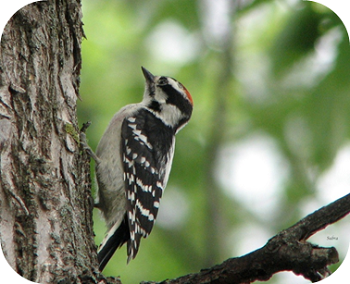 When I first started birding, although I could hear woodpeckers pecking away in the distance in the woods, I could barely spot them let alone distinguish one woodpecker from another.
When I first started birding, although I could hear woodpeckers pecking away in the distance in the woods, I could barely spot them let alone distinguish one woodpecker from another.
The smallest of the woodpeckers, also the commonest in North America is the Downy woodpecker which is about 6" in length. While the males have a distinctive red patch behind their head, the females are rather plain.
However the challenge lies in distinguishing the Downy woodpecker from the Hairy woodpecker which is almost identical except in size.
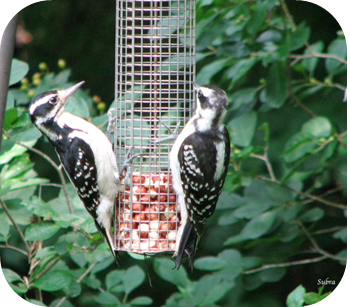 It is almost impossible to tell one from another in the field unless they happen to be together.
It is almost impossible to tell one from another in the field unless they happen to be together.
The Hairy is somewhat bigger than the Downy by about a couple of inches and also has a slightly longer beak.
Both species have white feathers accenting the outer sides of their tails. However the Downy woodpecker has dark spots on these white tail feathers, while the Hairy woodpecker's white tail feathers are a solid white.
A closer look at these photos brings into focus these differences.
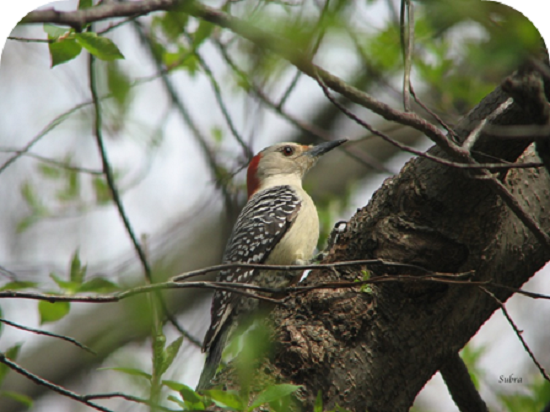
And then there is the Red-bellied woodpecker which is odd because while you can see its red head you can barely spot a red belly! However to add to the confusion there is another species aptly named the Red-headed woodpecker. You can look at the differences between a Red-bellied and Red-headed woodpecker shown here. Notice the red patch behind its head for the Red-bellied woodpecker and distinct black and white feathers. The Red-headed on the other hand has a striking bold red-head and its wing patterns are extremely beautiful when the bird is in flight.
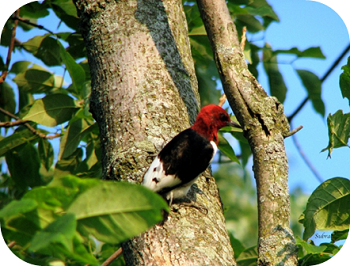
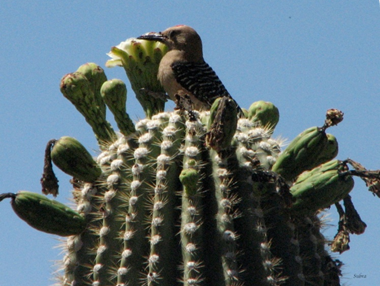
A few years back while birding in Arizona, I saw for the first time several Gila woodpeckers perched conspicuously on Saguaro cacti. Gila woodpeckers are endemic to the southwest desert region, specifically the Sonoran desert. The Saguaro cactus is rather very interesting in that it is anthropomorphic i.e. it appears to have human like features with drooping limbs and is highly revered. The Gila Woodpecker has finely adapted to the harsh desert climate depending on the cactus for sustenance. After trekking in the Ramsey Canyon south of Tucson for a couple of hours, I finally heard the distinct sound that only a woodpecker makes and was pleasantly surprised to spot my first Acorn woodpecker with its distinct eye ring. As the name suggests this woodpecker gathers acorns and hoards them.
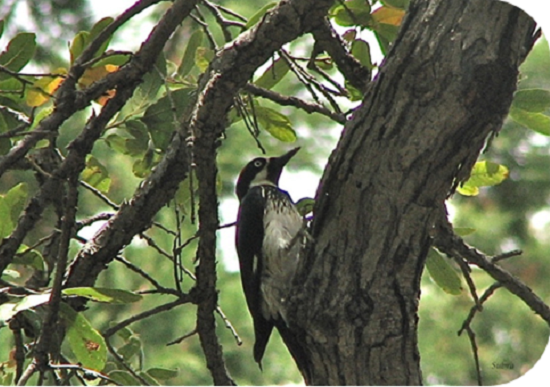
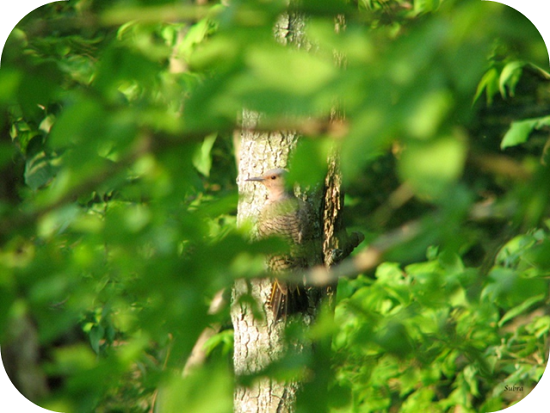
While there are many more woodpecker species worldwide, I’d like to address a species that doesn't have the word woodpecker in its name -the Northern Flicker. Often seen alone but sometimes in large groups, the yellow-shafted Northern flicker is more common in the Eastern states, while the red-shafted Northern Flicker is prevalent in the West. The Flicker in this photo seems to be subtly aware of the fact that it has been caught on camera!
* Wang L, Cheung JT-M, Pu F, Li D, Zhang M, et al. (2011)
Why Do Woodpeckers Resist Head Impact Injury: A Biomechanical Investigation.
PLoS ONE 6(10): e26490. doi:10.1371/journal.pone.0026490

|
This idea of taking woodpeckers and putting the differing aspects is very helpful! I enjoyed reading about the red bellied and red headed woodpeckers. |

|
Wonderful photos and description of different varieties. I love birds and chase them with my camera and know how difficult it is to catch them on it. Good to catch this early morning for a good day. |